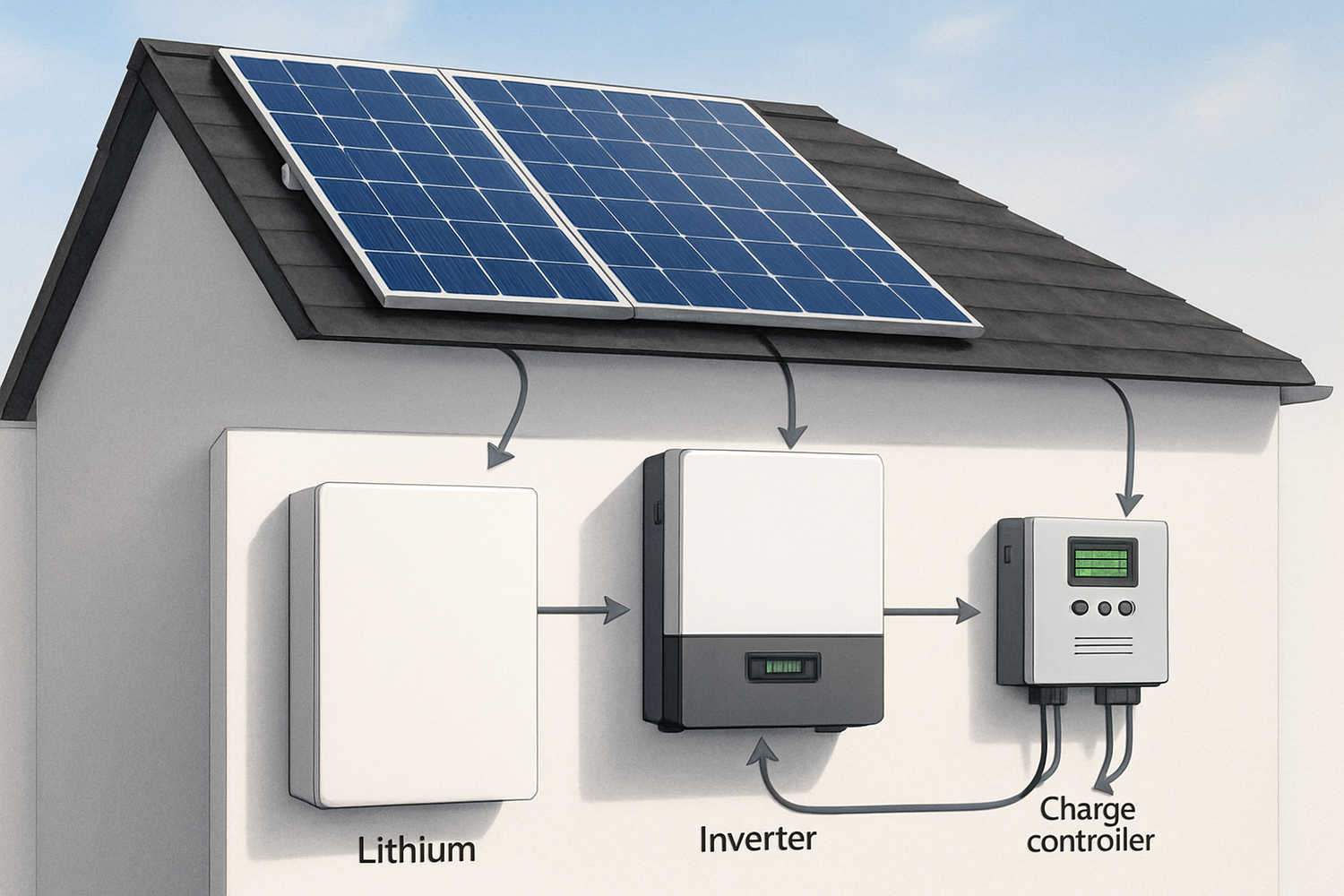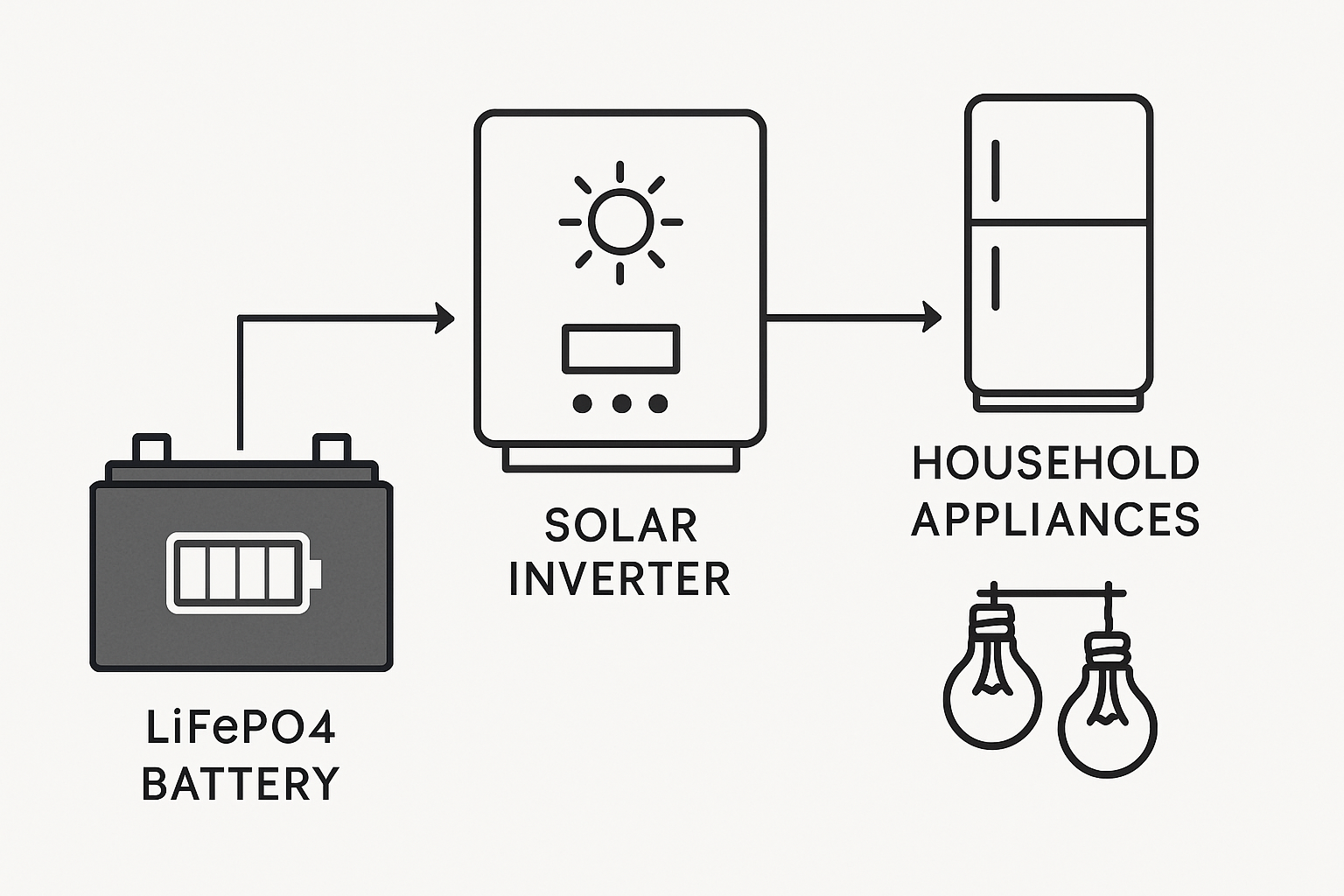Taking control of your energy supply is a powerful step toward self-sufficiency. A solar energy storage system is the key to unlocking the full potential of solar power, providing reliable electricity day and night. This buyer's guide provides the essential information needed to select the right components for an off-grid solar kit in 2025, ensuring your investment is both effective and durable.
Core Components of an Off-Grid Solar Kit
An effective off-grid solar kit operates as a balanced ecosystem. Each component has a distinct role, and they must work together seamlessly to deliver consistent power. The primary parts are the solar panels that generate electricity, the batteries that store it, and the inverters and charge controllers that manage its flow.
The Heart of the System: Solar Batteries
The battery is the core of any solar energy storage system. It stores the energy captured by your solar panels for use when the sun isn't shining. Among the various battery technologies, lithium iron phosphate (LiFePO4) has become a leading choice for its safety, longevity, and performance. A LiFePO4 battery, such as a 12v 100ah lithium ion battery or a larger 200ah lithium battery pack, offers a superior deep cycle capability compared to traditional options.
When evaluating a lithium ion solar battery, consider these key metrics:
- Capacity (Ah): Ampere-hours indicate how much charge the battery can hold.
- Voltage (V): The nominal voltage of the battery, commonly 12V, 24V, or 48V.
- Depth of Discharge (DoD): The percentage of the battery's capacity that can be safely used. LiFePO4 batteries often have a DoD of 90% or more.
- Cycle Life: The number of charge and discharge cycles a battery can endure before its capacity degrades significantly. A high-quality lithium phosphate battery can deliver thousands of cycles.
| Feature | LiFePO4 Battery | Lead-Acid Battery |
|---|---|---|
| Cycle Life | 3,000 - 7,000 cycles | 500 - 1,000 cycles |
| Depth of Discharge (DoD) | 90-100% | 50% |
| Efficiency | 95% or higher | 80-85% |
| Maintenance | None required | Regular fluid checks |
The Brains: Inverters and Charge Controllers
A solar inverter converts the direct current (DC) electricity stored in your batteries into alternating current (AC) electricity, which is the standard for powering household appliances. A charge controller, on the other hand, protects your batteries by regulating the voltage and current coming from the solar panels. Modern hybrid inverters often combine these functions into a single, efficient unit, simplifying the setup of a home battery storage system.
The Power Source: Solar Panels
Solar panels are responsible for converting sunlight into DC electricity. Their output is measured in watts, and the total wattage of your solar array will determine how quickly you can charge your lithium battery storage. Panel efficiency, which reflects how much sunlight is converted into electricity, is a critical factor in maximizing power generation, especially in limited spaces.
Sizing Your Energy Storage System for 2025
Properly sizing your system is fundamental to meeting your energy needs without interruption. This involves a careful assessment of your electricity consumption and planning for future requirements.
Calculating Your Daily Energy Consumption
Start by conducting an energy audit. List all the appliances you intend to power, their wattage, and the number of hours you use them each day. Multiply the wattage by the hours to find the daily watt-hours (Wh) for each device. Sum these figures to determine your total daily energy requirement in kilowatt-hours (kWh).
Factoring in Battery Capacity and DoD
Once you know your daily kWh consumption, you can calculate the necessary battery capacity. Use this formula to get an estimate: (Daily kWh × 1000) / (Battery Voltage × DoD) = Required Amp-hours (Ah). For example, if you need 4 kWh per day with a 12V LiFePO4 battery system (using 95% DoD), you would need approximately 350 Ah of capacity.
Planning for Autonomy and Scalability
Consider how many days of backup power you need. This is known as 'days of autonomy.' For reliable off-grid living, planning for 2-3 days of autonomy is a common practice. Also, choose a system that is scalable. A modular design allows you to add more batteries, like a 12v 100ah lifepo4 lithium battery, in the future as your energy needs grow.
Key Performance Metrics for Solar Storage
Beyond basic capacity, certain performance metrics determine the long-term value and efficiency of your solar energy storage solutions. The International Renewable Energy Agency (IRENA) notes that advancements in technology are making renewable energy more competitive and efficient.
Understanding Round-Trip Efficiency
Round-trip efficiency measures how much energy you get out of a battery relative to the amount of energy put into it. Higher efficiency means less wasted energy. According to the U.S. Energy Information Administration (EIA), utility-scale battery storage systems can achieve a round-trip efficiency of around 82%. High-quality LiFePO4 batteries can reach efficiencies of 95% or more, maximizing the use of your generated solar power.
The Significance of Cycle Life
Cycle life directly impacts the total cost of ownership. A battery with a longer cycle life will function effectively for more years, providing a better return on your investment. For a detailed breakdown of how these metrics affect real-world use, you can review this comprehensive analysis of solar storage performance, which provides data on cycle life and efficiency.
Integrating Your System: Safety and Installation
A safe and correctly installed system is crucial for performance and longevity. Key components and best practices ensure your system operates reliably.
The Role of a Battery Management System (BMS)
Every lithium iron phosphate battery pack should include an integrated Battery Management System (BMS). The BMS is a critical safety feature that protects the battery from overcharging, over-discharging, short circuits, and extreme temperatures. It ensures the cells are balanced and operating within safe parameters, which is vital for the battery's health and lifespan.
Installation Best Practices
Ensure your system is installed in a well-ventilated area away from direct sunlight and moisture. Use correctly sized wiring to handle the electrical currents safely, and make sure all connections are secure. For complex systems, consulting with a qualified professional is highly recommended to ensure compliance with local codes and safety standards.
Future-Proofing Your Investment
The energy landscape is evolving. The U.S. Department of Energy's Solar Futures Study highlights the growing importance of solar energy and storage in decarbonizing the grid. By choosing a modular and scalable system, you prepare for a future where you can easily expand your capacity or integrate new technologies. This forward-thinking approach ensures your system remains a valuable asset for years to come.
A Forward Look at Energy Independence
Investing in a solar energy storage system is a significant step toward achieving energy independence. By understanding the core components, correctly sizing your system based on your needs, and prioritizing key performance metrics, you can build a reliable and efficient power solution. As technology continues to advance and costs decline, as noted by the International Energy Agency (IEA), the ability to generate and store your own clean energy is more accessible than ever. This empowers you to secure your energy future with confidence.
Frequently Asked Questions
What is the best type of battery for an off-grid solar kit?
LiFePO4 (Lithium Iron Phosphate) batteries are widely recommended for an off-grid solar kit. They offer a long cycle life, high depth of discharge, excellent safety features, and require no maintenance, making them a reliable and cost-effective choice over the long term for a deep cycle lithium battery application.
How long do solar batteries last?
The lifespan of a solar battery depends on its chemistry and usage patterns. A 100ah lithium ion battery based on LiFePO4 chemistry can last for 10 to 15 years or more, typically delivering between 3,000 and 7,000 charge-discharge cycles before its capacity significantly diminishes.
Can I add more batteries to my system later?
Yes, many modern solar energy storage systems are designed to be scalable. You can often add more batteries in parallel to increase your storage capacity. It is important to ensure the new batteries are compatible with your existing setup and that your inverter and charge controller can handle the additional capacity.





Leave a comment
All comments are moderated before being published.
This site is protected by hCaptcha and the hCaptcha Privacy Policy and Terms of Service apply.